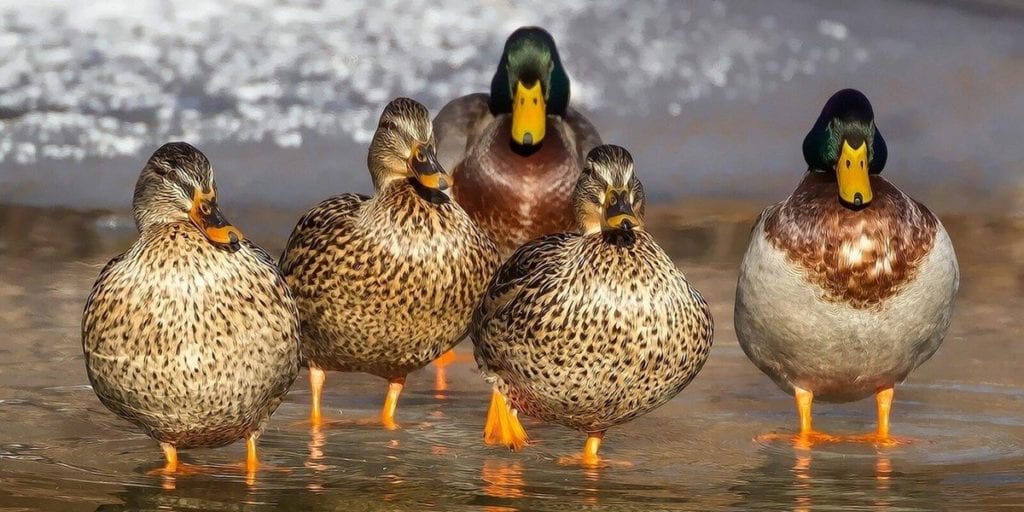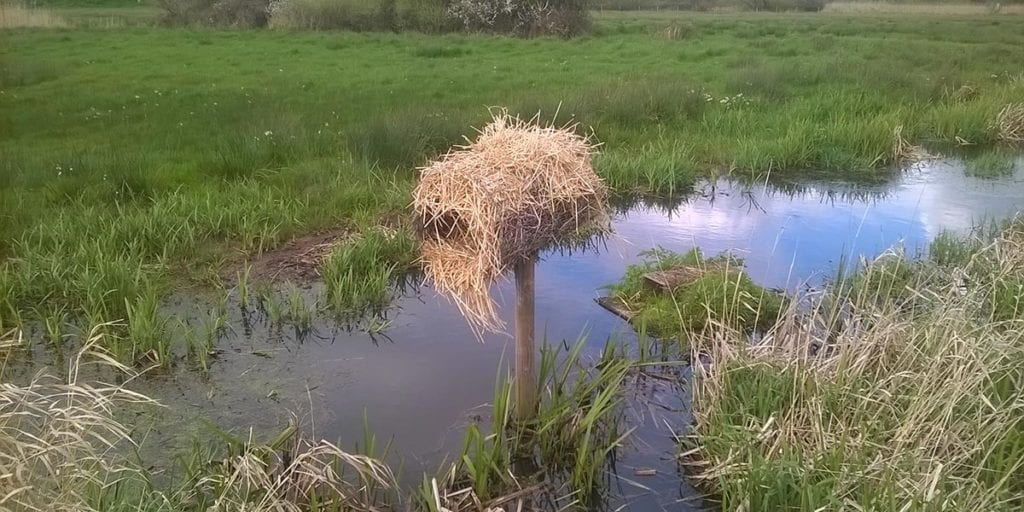Get your ducks in a row

James Green
Releasing reared mallard can be counter-productive, says James Green. Instead, try siting duck nest tubes which have proven to boost wild bird populations.
In my conversations with fellow wildfowlers I often hear about the conservation work they undertake, from habitat management to litter picks and pest control. They are rightly very proud of this aspect of the sport and more shooters need to be following in their footsteps. We need to ensure we are putting back more than we take to leave things in good order for the next generation.
However at times, good intentions or a little bit of information can be dangerous. I have often heard small pond syndicates, game shooting syndicates and wildfowling clubs highlight their conservation credentials, pointing out that they put down more reared or bought-in ducks than they take. They believe they are putting something back, but they simply aren’t aware of the potential negative consequences for our wild native mallard population.
The science available suggests that releasing mallard is not helping our wild population. The reason is that reared mallard have a poor survival rate as they don’t have the wild birds’ natural instincts. They don’t have the same desire to migrate and are poor breeders. When they try to mate with wild birds they are either unsuccessful or, if they do get it right, end up shrinking the gene pool.
Releasing reared birds on available land also reduces the number of good sites for wild birds to breed on. And there’s the potential to spread disease on a site by releasing artificially high numbers of reared ducks. Disease can also be introduced from rearing units.
Unfortunately, the bottom line is that releasing reared mallard is bad news for our wild mallard population. The simple solution is to release fewer and do more for our wild birds.

Habitat management is a fantastic starting point. Steps such as clearing out old ponds that have silted up or grown over with reeds or weeds can make a real difference. Don’t clear all the reeds or weeds, though – these will help provide insect food for your ducklings later. By removing fallen trees and paying more attention to the placement of islands, we can also help to protect ducks from ground-based predators.
Proper pest and predator control is important; set carefully sited Larsen traps, and keep on top of the crows, squirrels and foxes, especially as the wildfowling season draws to a close and the ducks begin selecting their breeding sites. Mink rafts are also useful to monitor for the presence of these non-native predators before setting traps – this removes the requirement for daily checks.
There’s another tool you can use to help nesting birds evade predation long enough to at least get their ducklings to the fledgling stage. Many wildfowling clubs are now installing duck nest tubes – with some fantastic results.
Mallard nests are often destroyed before the eggs have chance to hatch, through predation, trampling from livestock or disturbance from dog walkers. The success rates from ground nests can be below 15 per cent. Duck nest tubes offer security and protection from the elements. Plus, you can place as many as you like over a relatively small site. When used properly these tubes can boost fledging success to over 90 per cent.
Ultimately, the duck nest tubes increase the brood size and the chances of the ducklings making it to adulthood. It’s a fantastic feeling when your first duck nest tube brings success. If you have access to some suitable sites, we’d urge you to follow the guidelines (below) and give up a day of your time to truly put something back, safe in the knowledge that you are doing the right thing.
How to build a duck nest tube

Materials
- Medium tensile garden wire mesh – 1m x 2.2m x 2.5cm mesh
- Cable ties/wire strips or hog rings
- Hay
- Scaffold tube/post – size dependent on the depth of water and how soft the bottom is – finished height to be 2ft above water
- Either a metal frame or a wooden plank fixed to metal pole as per the online video (see link below).
Construction
- Cut your length of wire to 7ft (2.2m)
- Roll the wire on a flat surface to make a 30cm diameter cylinder, securing the join using cable ties or, better still, wire
- Over the remaining flat wire spread an even covering of hay approx. 2in thick, ensuring there are no gaps
- Continue rolling the wire, creating an outer cylinder enclosing a layer of hay
- Fix the end of the wire to secure the outer layer
- Pack more hay into the outer cylinder to fill in any gaps
- Once you are happy with it, fix the tube to either a base or cradle
- Put some loose hay into the tube to give a base layer of bedding.
Siting tips
- Choose a location where mallard are already breeding; tubes will not magically attract ducks.
- Don’t site the tubes over fast-flowing or tidal water.
- The ducklings will need to find food close by when they fledge; reed beds, weeds and cover hold the insects they need.
- Try not to site tubes where predators can investigate them.
- Do not put them too close together – ideally, they should be at least 20m apart.
- Position the tube 90° to the prevailing wind – no one likes a draughty home.
- Move tubes around if they do not work after the second breeding season.
- Mallard will often return to try to breed in the same sites they were raised; placing more tubes over a period of years can work wonders.
- Refresh the hay each year in February at the latest.
- Make sure you have the necessary permissions from the landowner and potentially consent from a local organisation dealing with such matters, such as Natural England, Natural Resources Wales, Scottish Natural Heritage or Northern Ireland Environment Agency, dependent on where the site is located.
BASC has made an explanatory video with the Westmorland Wildfowlers. It’s a great watch and demonstrates all the steps of building a duck nest tube in detail:
Sophie Stafford, one of BASC’s Science Officer is responsible for the duck nest tube programme.
If you have access to some sheltered water with nesting ducks and want to get involved, contact Sophie by email.
